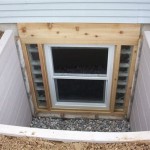Dig Out Crawl Space To Make Basement: A Guide for Homeowners
A crawl space is a small, often dirt-filled area beneath a house, providing access to plumbing, wiring, and other utilities. While it might seem like a forgotten space, its condition significantly impacts the health and value of your home. A common question homeowners ask is, "Can I dig out my crawl space to create a finished basement?" The answer, often, is a resounding yes, but it requires careful planning and execution to avoid costly mistakes.
Converting a crawl space into a basement offers numerous benefits. It can add square footage for living space, create a home office, playroom, or even a guest suite. It also provides an opportunity to improve the foundational structure of your home, address moisture problems, and potentially increase its value. However, converting a crawl space into a basement is a significant undertaking. It involves excavation, foundation work, insulation, plumbing, electrical, and finishing touches – projects best handled by experienced professionals.
Assessing Feasibility and Planning
Before diving into the exciting possibilities, a realistic assessment is crucial. Factors to consider include:
1.
Soil Conditions:
The type of soil beneath your home significantly impacts the feasibility of digging out a crawl space. Clay soils, prone to expansion and contraction with moisture changes, can complicate the project. Sandy soils are generally more favorable.2.
Foundation Structure:
A thorough inspection by a qualified professional is essential to determine the existing foundation's integrity. The foundation needs to be strong enough to support the added weight of a basement.3.
Local Building Codes:
Contact your local building department to confirm excavation and construction requirements. They will specify the depth, minimum foundation height, and necessary permits.4.
Cost Estimation:
Digging out a crawl space to create a basement is not cheap. Factors impacting cost include excavation depth, foundation work, insulation, plumbing, electrical, and finishing materials. Seek multiple bids from reputable contractors and compare pricing.The Excavation Process
Once the feasibility is assessed, a professional excavation team will be required for this stage. The process involves:
1.
Site Preparation:
Clearing the surrounding area from any obstacles like landscaping, fences, or sheds.2.
Excavation:
Utilizing heavy machinery to carefully dig out the crawl space to the required depth.3.
Grading and Drainage:
Properly grading the excavated area to ensure water runoff away from the foundation and prevent water accumulation. This might involve installing French drains or other drainage systems.4.
Backfilling:
Carefully backfilling the perimeter of the excavation with compacted gravel or soil to provide support for the foundation walls and ensure proper drainage.Foundation and Basement Construction
After excavation, the foundation and basement construction begin. This involves:
1.
Foundation Walls:
Building new foundation walls using concrete, poured concrete blocks, or precast concrete panels. These walls need to be strong enough to support the weight of the basement and the house above.2.
Basement Floor:
Pouring a concrete floor, often with insulation for warmth and noise reduction.3.
Plumbing and Electrical:
Installing plumbing and electrical systems to accommodate the new basement. This should be done by licensed and experienced professionals to ensure safety and code compliance.Finishing the Basement
The final stage involves finishing the basement. This might involve:
1.
Insulation:
Installing insulation to improve the basement's energy efficiency, reduce noise, and maintain a comfortable temperature.2.
Drywall and Painting:
Installing drywall, taping, and mudding, and finishing with paint or other desired wall coverings.3.
Flooring:
Installing the chosen flooring type, such as carpet, tile, hardwood, or laminate.4.
Lighting:
Installing lighting fixtures, including recessed lighting, pendant lights, or track lighting.5.
Other Finishing Touches:
Adding doors, windows, trim, baseboards, and other decorative elements to enhance the aesthetic appeal and functionality of the basement.Creating a basement from a crawl space is a transformative home improvement project that can increase living space, increase value, and improve your home's overall functionality. With careful planning, expert execution, and attention to detail, this investment can truly enhance your lifestyle. However, it's crucial to engage experienced professionals for the excavation, foundation construction, and basement finishing to ensure safety, code compliance, and a successful outcome.

Increase The Living Space Of Your House Bisson Expert

How To Change Your Crawlspace Into A Basement

Crawl Space To Basement Denver Conversion Finishing

Dirk The Digger Helps Dig Level Dirt In Basement Crawl Space

Can Digging The Crawl Space Yourself Weaken Foundations

Can I Dig Out My Crawl Space Into A Basement

How Much Does A Crawl Space To Basement Conversion Cost Youtube

Action Sequence Of Putting Down A Floor In Your Basement Crawl Space

Massive Diy Basement Dig Out Start To Finish Time Lapse Youtube

How To Dig Out A Crawl Space Make Basement Doityourself Com
Related Posts







